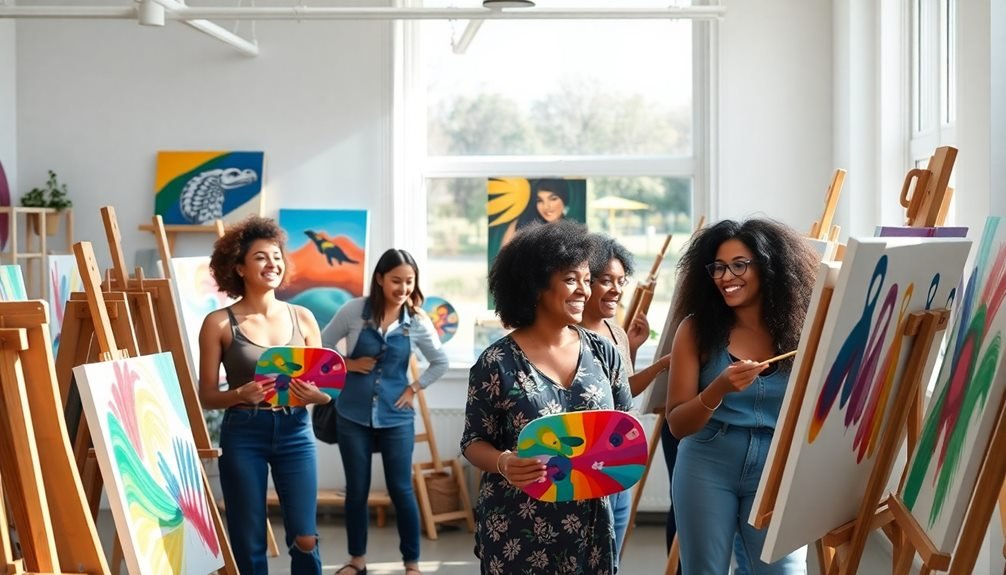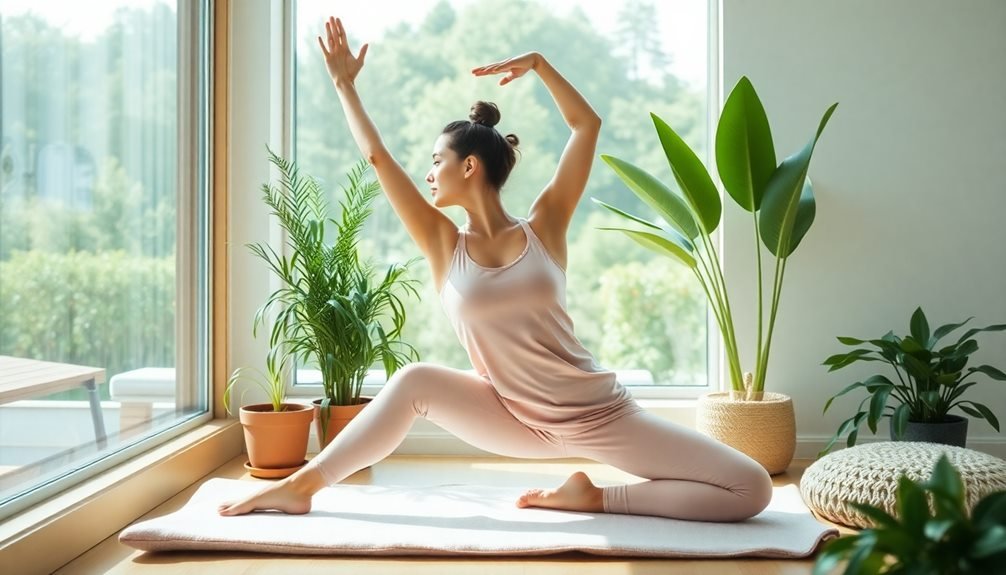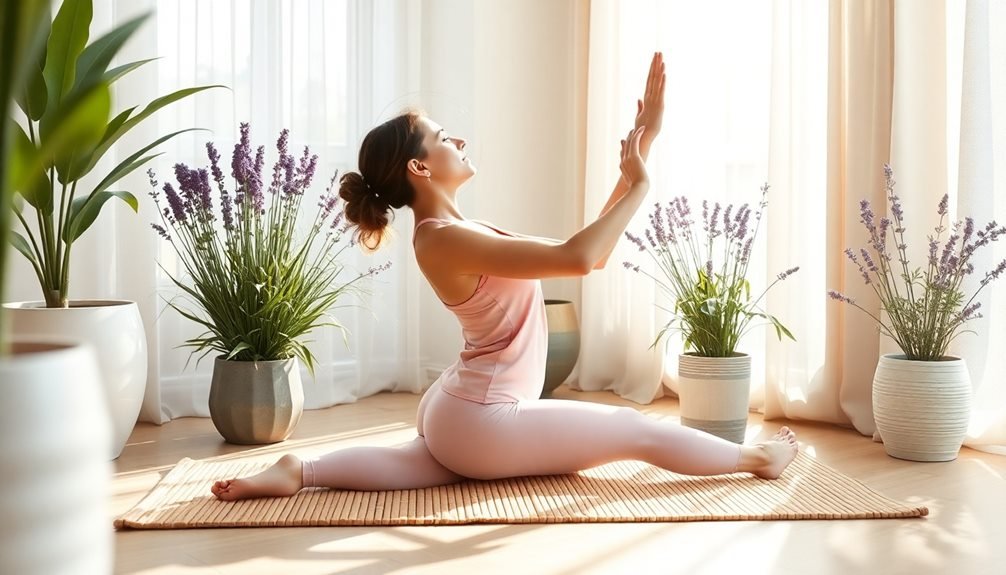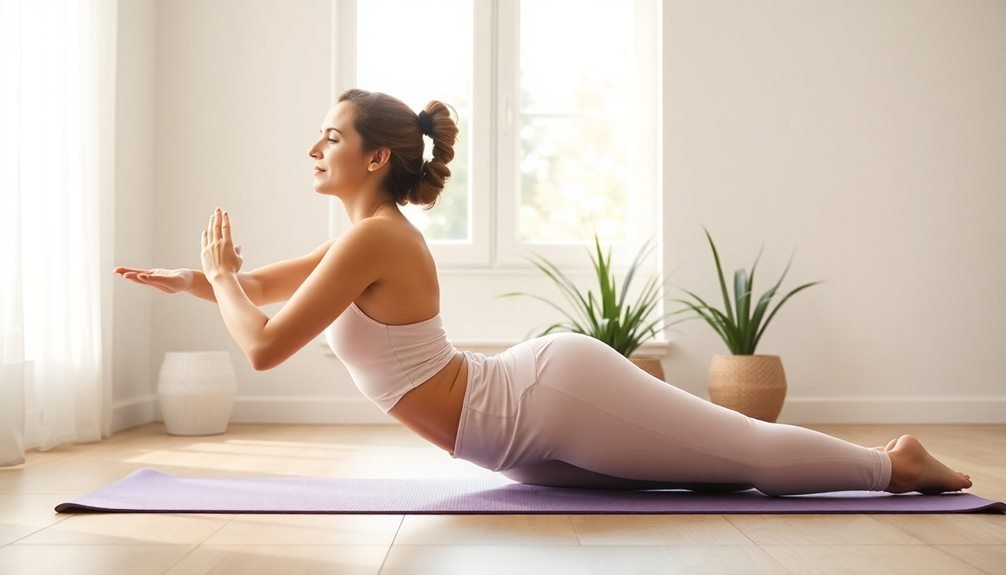When you paint with others, your brain releases a powerful mix of feel-good chemicals that naturally reduce stress. The rhythmic brushstrokes lower your cortisol levels while boosting serotonin and dopamine, creating a natural calm. You'll form meaningful connections as you share the creative journey, with each stroke building confidence in your artistic abilities. The supportive environment allows you to express yourself freely while the mindful focus on colors and textures keeps you grounded in the present moment. Understanding the science behind group painting reveals even more ways this activity transforms your wellbeing.
The Science Behind Art Therapy

Research from across the medical field shows that art therapy reduces cortisol levels and increases serotonin production in the brain. When you engage in creative activities like painting, your body naturally releases dopamine, a neurotransmitter that creates feelings of pleasure and reward. This chemical reaction helps combat anxiety and depression while promoting a sense of well-being.
Your brain's neural pathways become more active during artistic expression, strengthening connections between different regions responsible for emotion regulation and problem-solving. As you focus on creating art, you'll enter a meditative state similar to mindfulness practices, which can lower blood pressure and decrease muscle tension.
Group art therapy adds another beneficial dimension through social interaction. When you're painting alongside others, your brain releases oxytocin, often called the "bonding hormone," which enhances feelings of trust and connection.
You'll also benefit from mirror neurons – specialized brain cells that activate both when you perform an action and when you watch others perform the same action. This neurological response helps explain why group painting sessions can amplify the therapeutic effects compared to solo creation.
Social Bonding Through Creative Expression
Three key elements make group painting an exceptional social bonding activity: shared experiences, non-verbal communication, and collaborative achievement.
When you paint alongside others, you're creating memories and forging connections through mutual creative exploration. You'll find yourself naturally sharing techniques, color choices, and artistic interpretations with your fellow painters.
Non-verbal communication flourishes in group painting sessions as you observe others' brushstrokes, respond to their artistic choices, and adapt your own work accordingly.
You'll develop an unspoken understanding with your painting companions, leading to deeper interpersonal connections that transcend everyday conversation.
The collaborative achievement aspect becomes evident when you're working on either individual or shared canvases.
You'll experience collective pride as each person's artwork develops, celebrating both personal and group progress.
Whether you're creating separate pieces or contributing to a single collaborative work, you're building trust and mutual respect through artistic expression.
This creative social bonding often extends beyond the painting session, as you'll find yourself developing lasting friendships based on shared artistic experiences and the vulnerable act of creating together.
Building Self-Worth With Every Brushstroke

While group painting nurtures social connections, it also powerfully impacts individual self-worth. As you create art alongside others, you'll discover that each brushstroke builds confidence in your creative abilities. You don't need formal training or natural talent – the simple act of completing a painting proves you can achieve artistic goals.
When you're painting in a group setting, you'll notice that everyone's work looks different, helping you embrace your unique artistic voice. You'll learn that there's no "wrong way" to express yourself, which gradually dissolves self-doubt and perfectionism. As you experiment with colors and techniques, you're developing problem-solving skills that transfer to other areas of life.
The tangible nature of painting provides immediate evidence of your capabilities. You can see your progress from blank canvas to finished piece, reinforcing your sense of accomplishment.
When group members compliment your work or ask about your techniques, it validates your artistic choices and boosts your self-esteem. This positive feedback loop encourages you to take more creative risks and trust your instincts, leading to increased confidence both in and out of the art studio.
Mindfulness in Group Painting Sessions
Every brushstroke in a group painting session offers an opportunity for mindfulness. When you're painting alongside others, you'll find yourself naturally drawn into the present moment, focusing on the sensory experience of creating art. The gentle sound of brushes against canvas, the scent of paint, and the shared energy of fellow artists create an environment that encourages mindful awareness.
Group painting sessions help you develop mindfulness through these key elements:
- The rhythmic motion of painting naturally calms your breathing and helps you maintain awareness of your body's movements.
- Working alongside others creates a collective energy that keeps you grounded in the present moment.
- The tactile experience of mixing colors and applying paint engages your senses fully.
- The shared silence or quiet conversation creates a meditative atmosphere.
As you practice mindfulness through group painting, you'll notice your thoughts becoming clearer and your stress levels dropping.
This combination of artistic expression and mindful awareness creates a unique form of meditation that's both accessible and enjoyable. You don't need prior meditation experience – the act of painting itself guides you into a mindful state.
Creating Safe Spaces Through Art

A comfortable studio environment forms the foundation of therapeutic group painting. You'll find that a well-designed art space helps reduce anxiety and encourages creative expression. Natural lighting, proper ventilation, and adequate workspace for each participant create an atmosphere where you can fully immerse yourself in the creative process.
When you're painting in a group setting, it's crucial to establish clear boundaries and mutual respect. You don't need to worry about judgment or criticism, as facilitators guarantee that everyone follows supportive communication guidelines. The space becomes a sanctuary where you can experiment with colors, textures, and techniques without fear of evaluation.
You'll notice that the physical arrangement matters too. Circular seating promotes connection while maintaining personal space, and easily accessible art supplies eliminate unnecessary stress. Temperature control and comfortable seating allow you to focus entirely on your artwork.
Even background music can be carefully selected to enhance the calming atmosphere.
Frequently Asked Questions
What Painting Supplies Should Beginners Bring to Their First Group Session?
You'll need basic acrylic paints, brushes in varied sizes, a canvas or paper pad, an apron, pencils, erasers, and a palette. Don't forget paper towels and a water container for cleaning brushes.
How Long Does a Typical Group Painting Session Usually Last?
You'll typically spend 2-3 hours at a group painting session. Most studios schedule evening classes lasting around 2 hours, while weekend sessions might run longer, giving you extra time to complete your artwork.
Can Children and Adults Participate in the Same Group Painting Class?
You'll find many studios offer mixed-age painting classes where kids and adults can create together. Just check age requirements first, as some classes may have restrictions or require children to be accompanied.
Are There Specific Dress Code Requirements for Attending Group Painting Sessions?
You'll want to wear comfortable, casual clothes you don't mind getting paint on. While there's no strict dress code, it's smart to bring an apron or wear old clothes to protect your outfit.
What Happens if Someone Accidentally Damages Another Participant's Artwork During Class?
If you accidentally damage someone's artwork, you'll need to apologize immediately and inform the instructor. Most studios have policies in place to handle these situations and may offer compensation or solutions.
In Summary
When you pick up that brush alongside others, you're doing more than making art – you're creating connections, building confidence, and giving your mind a much-needed break from daily stress. Whether you're a seasoned artist or complete beginner, group painting offers a judgment-free zone where you can express yourself freely. So grab those paints, join a class, and discover how shared creativity can transform your wellbeing.





Leave a Reply